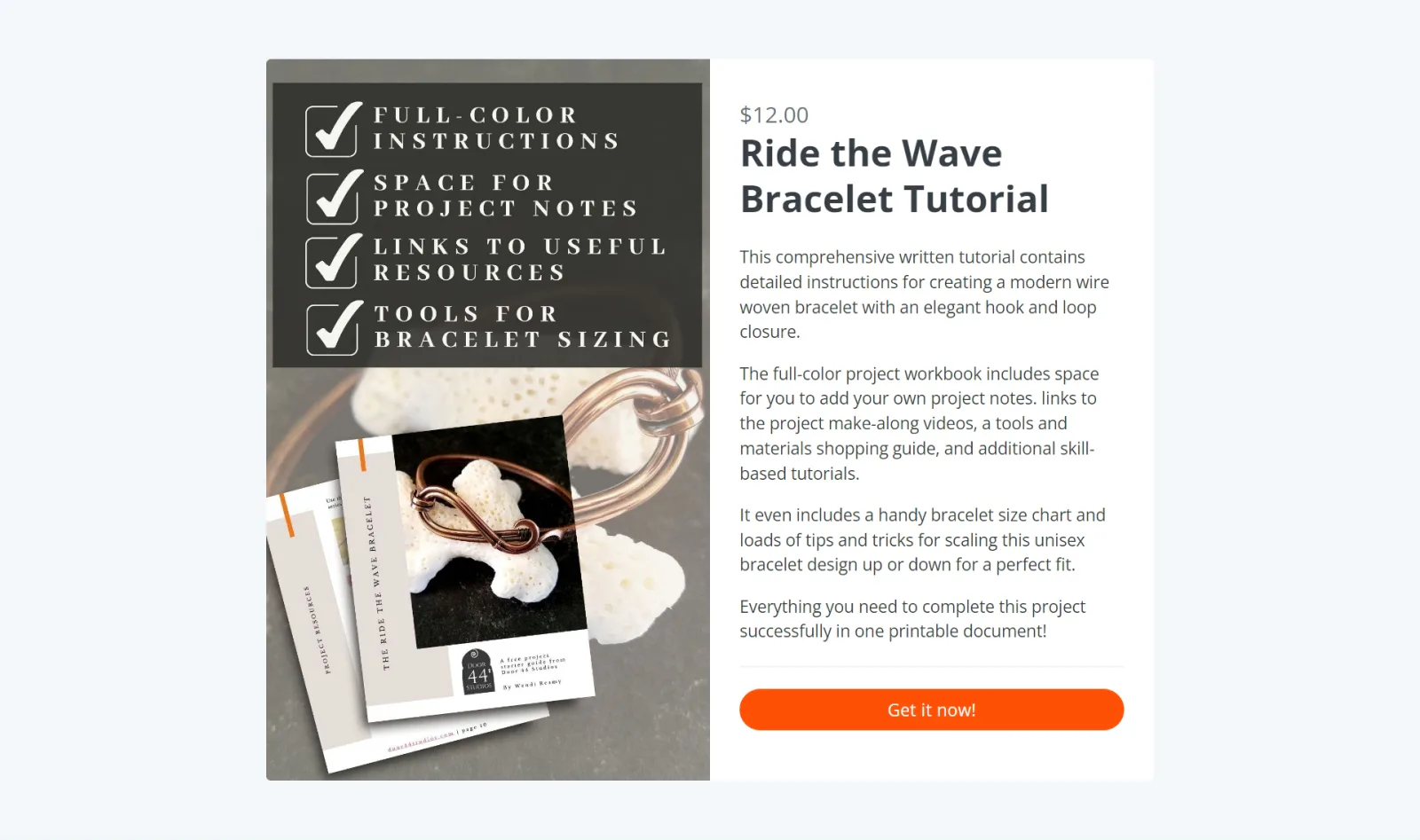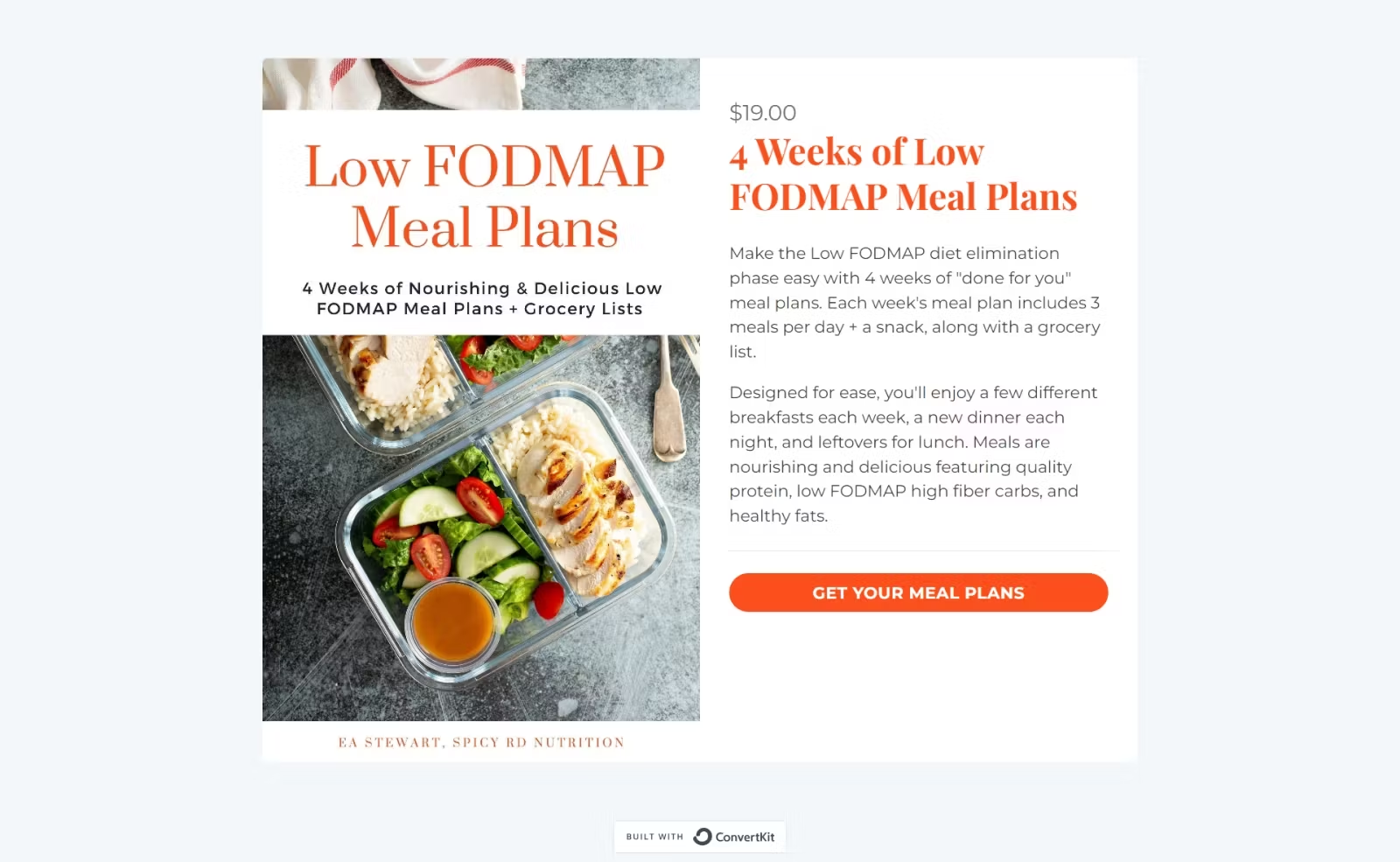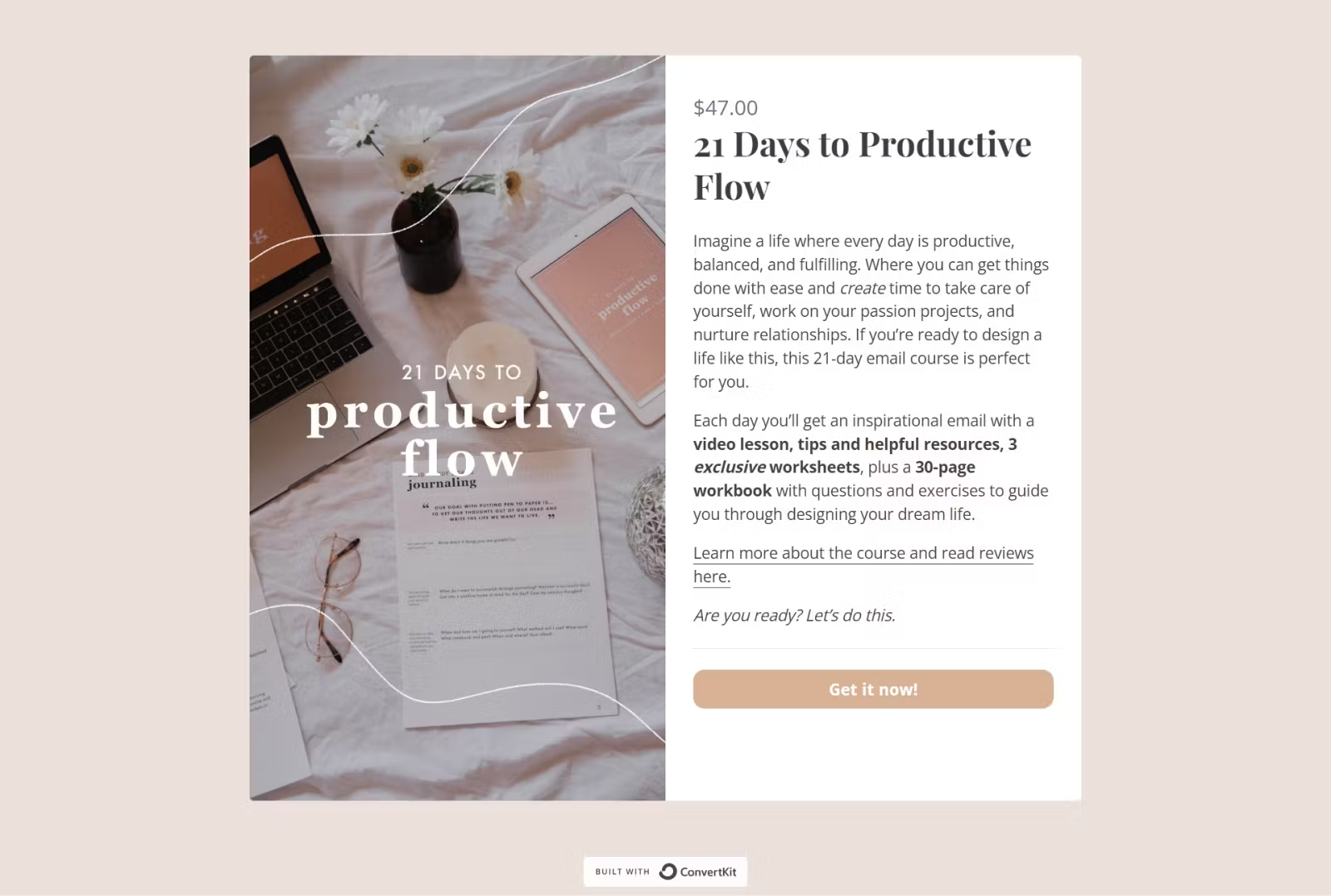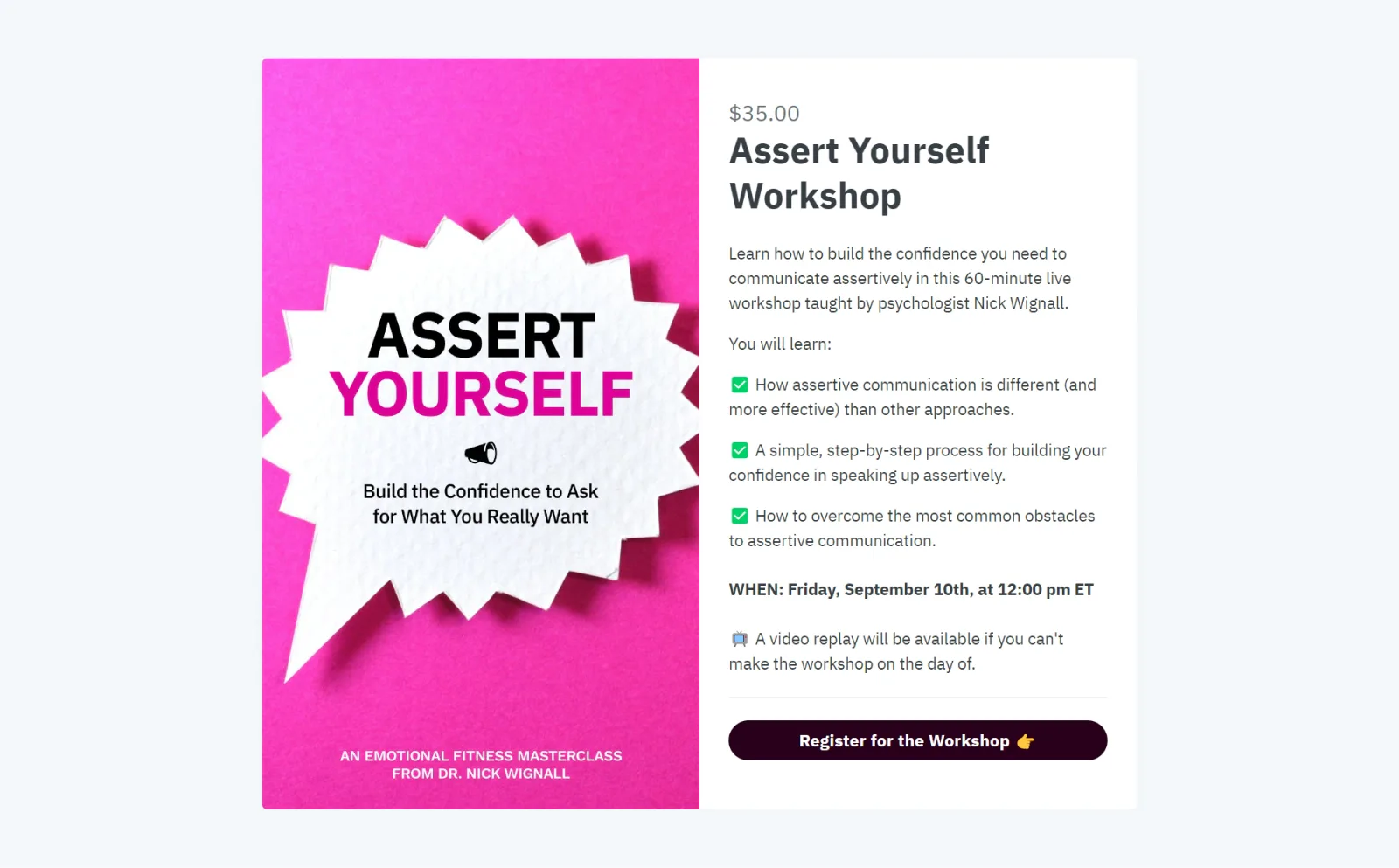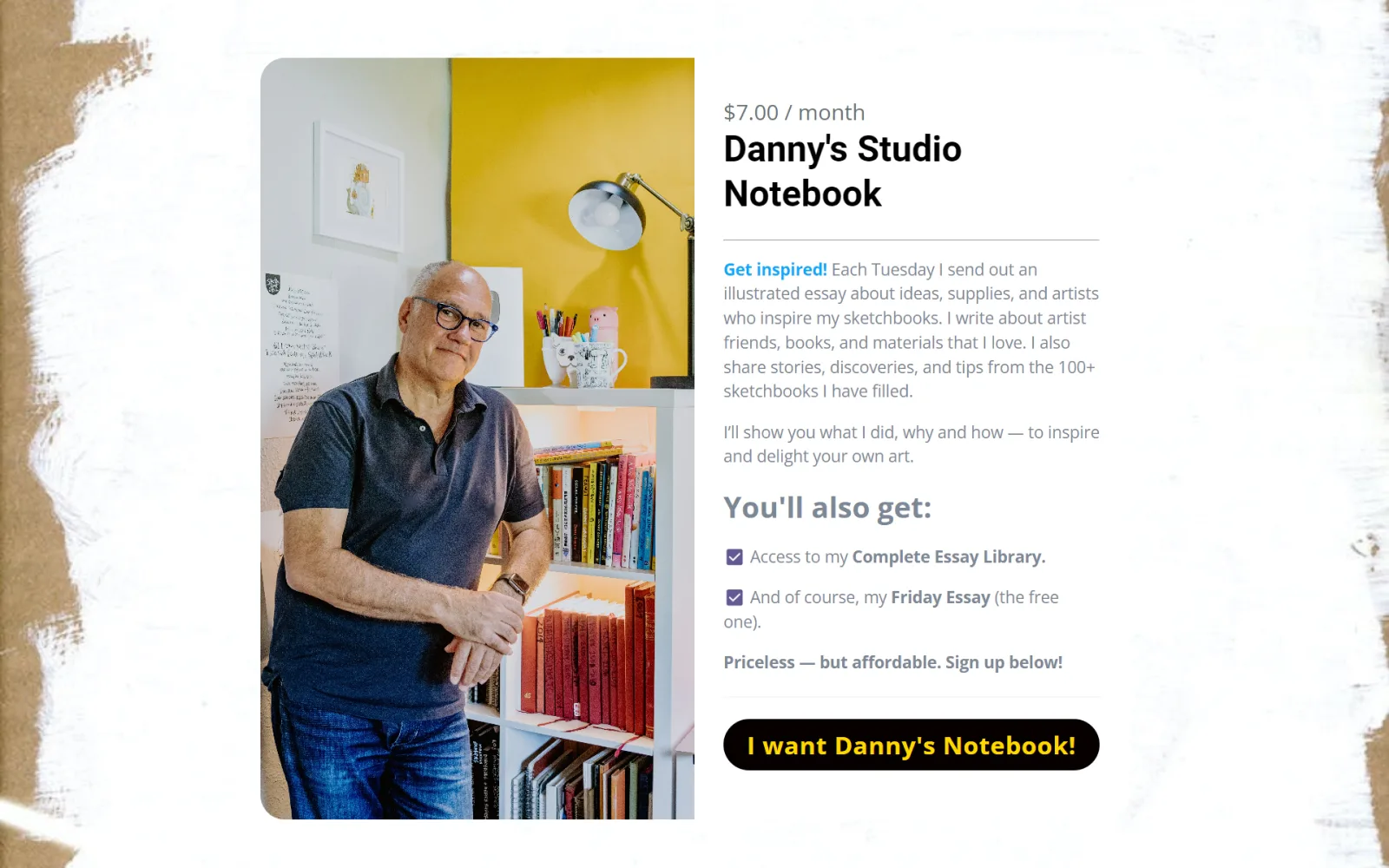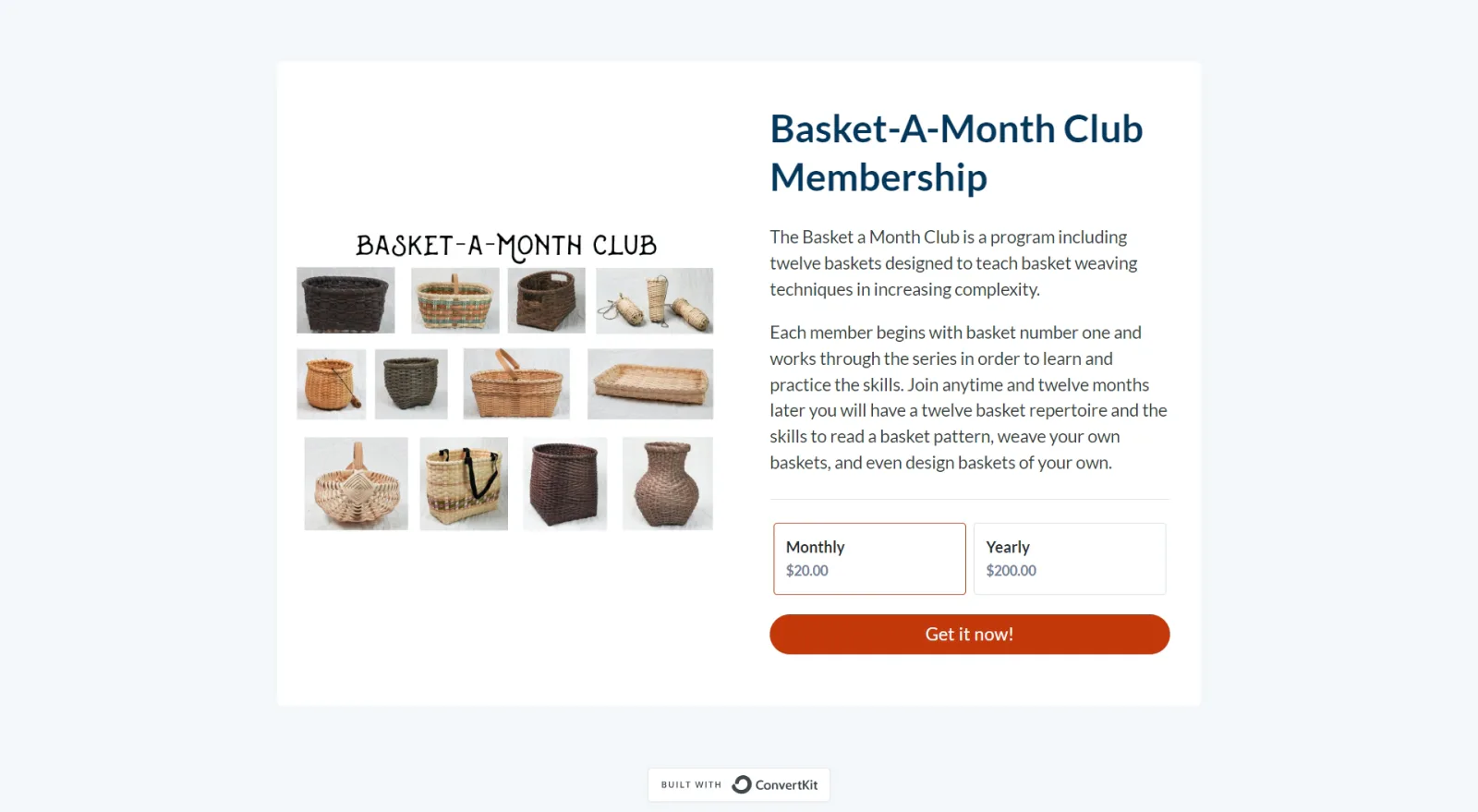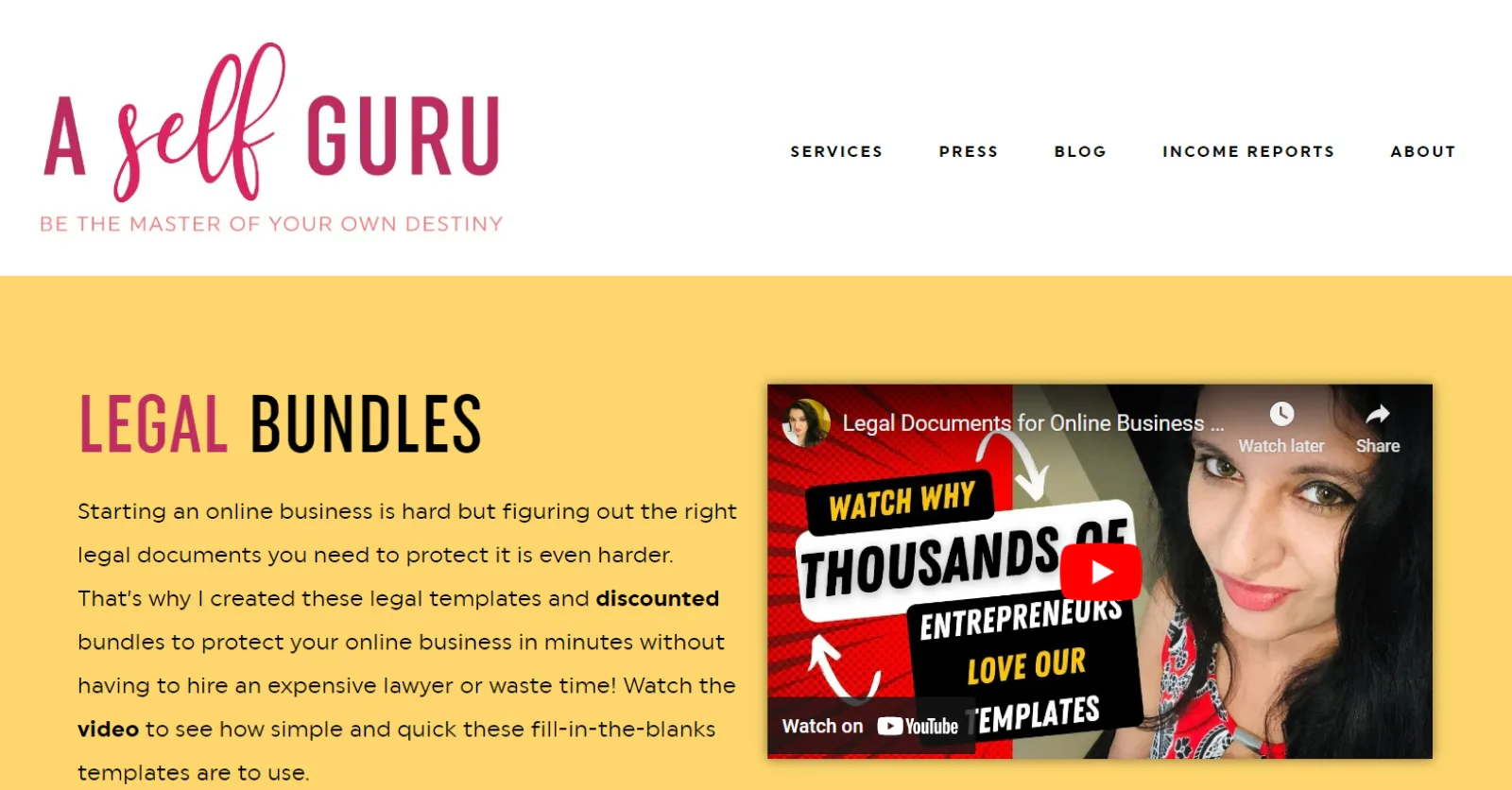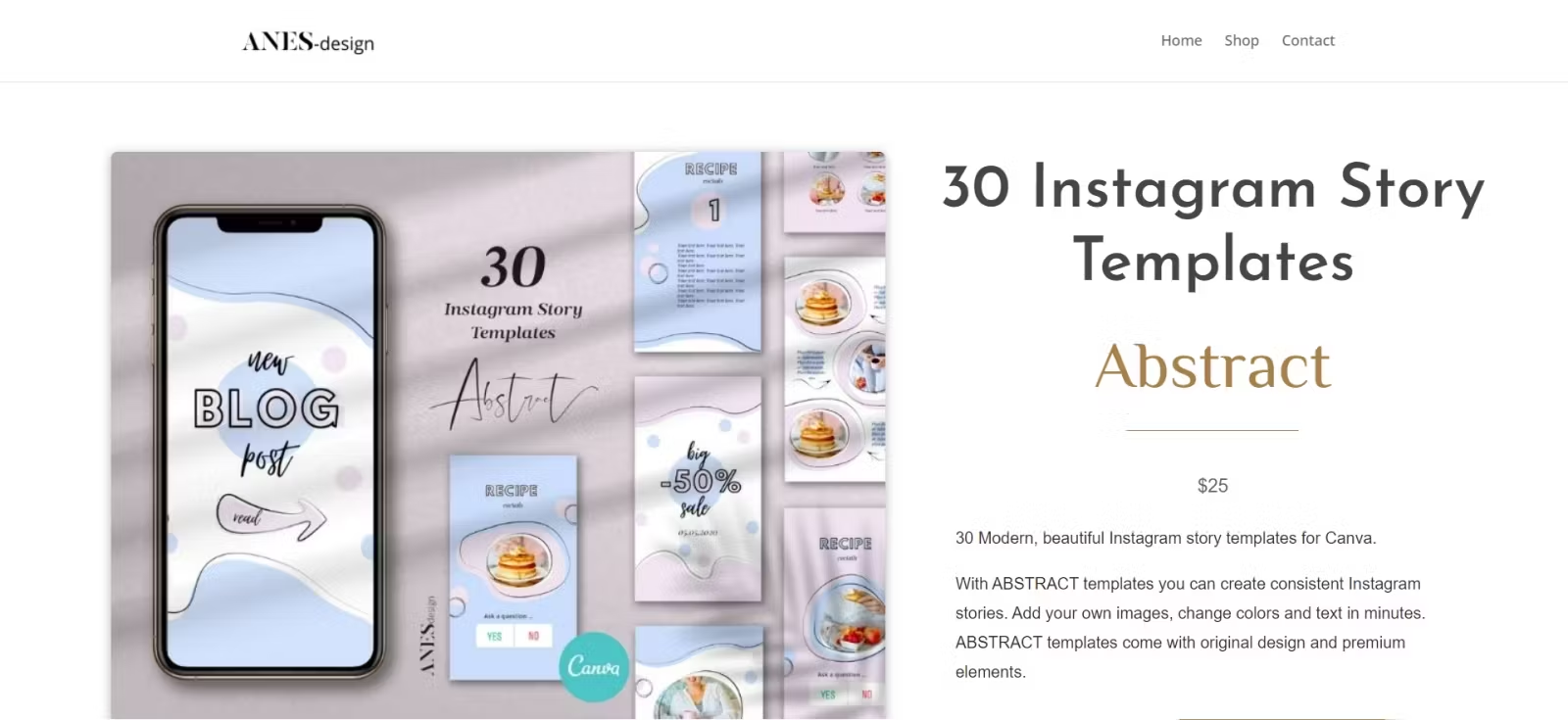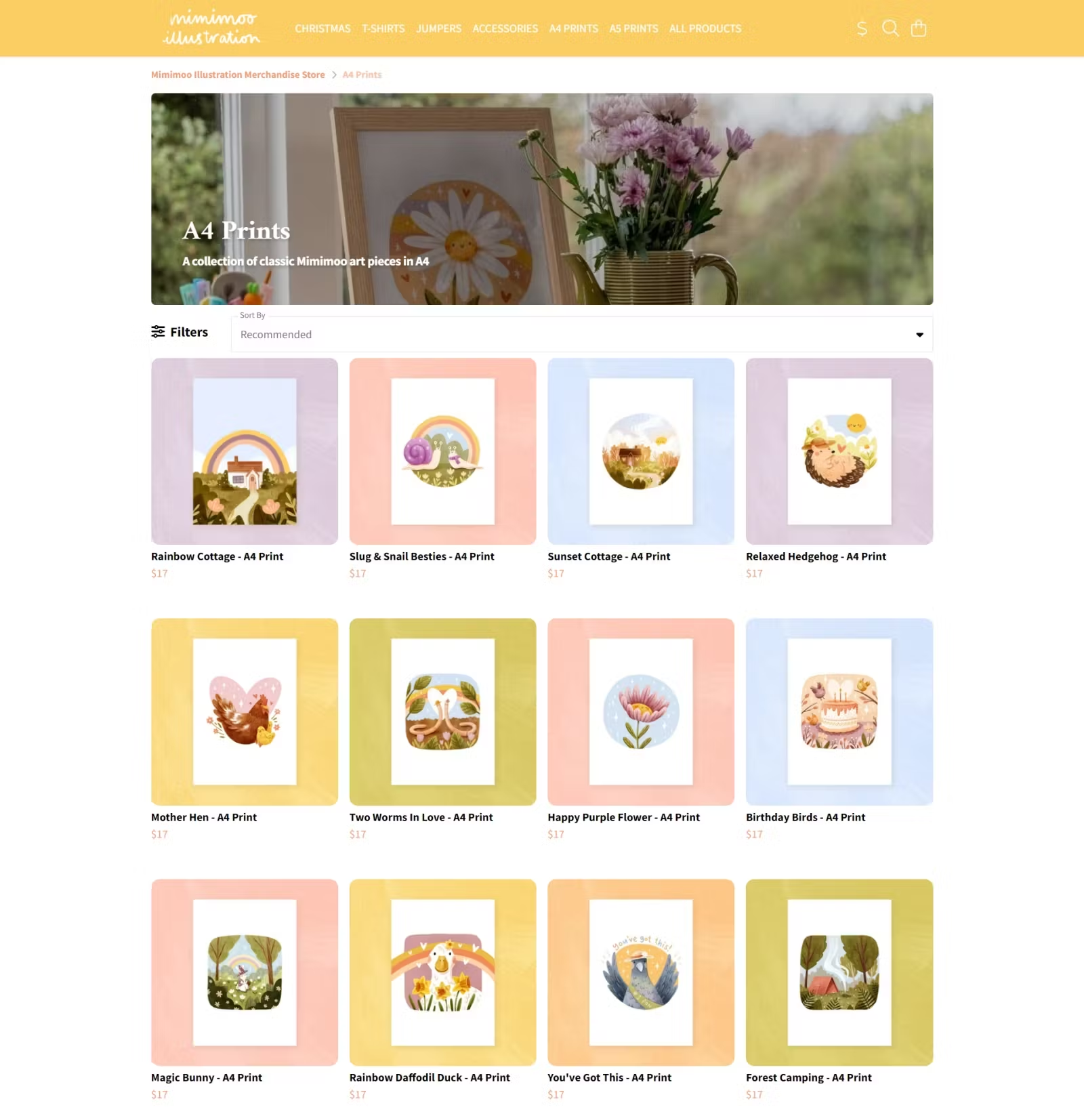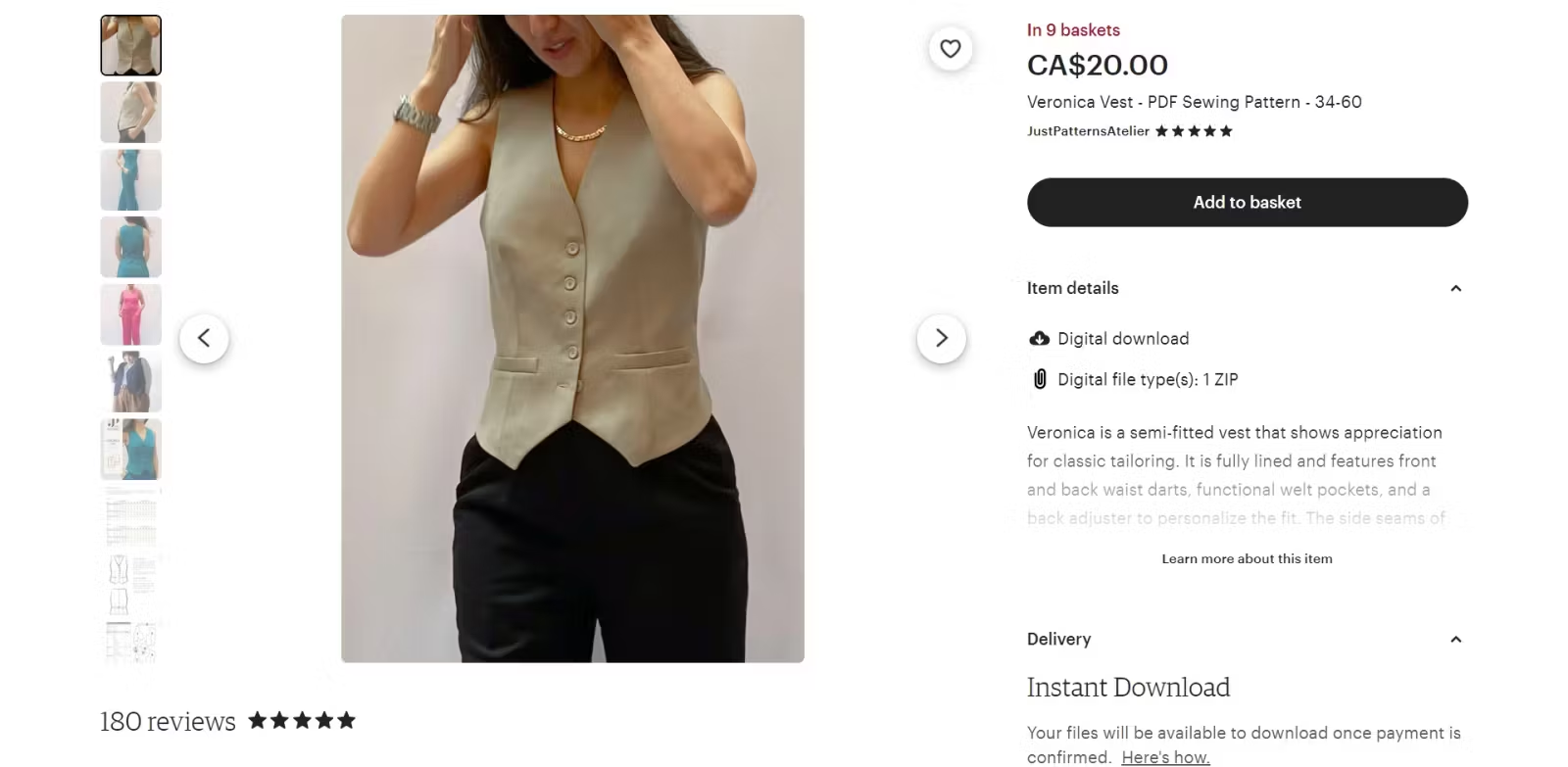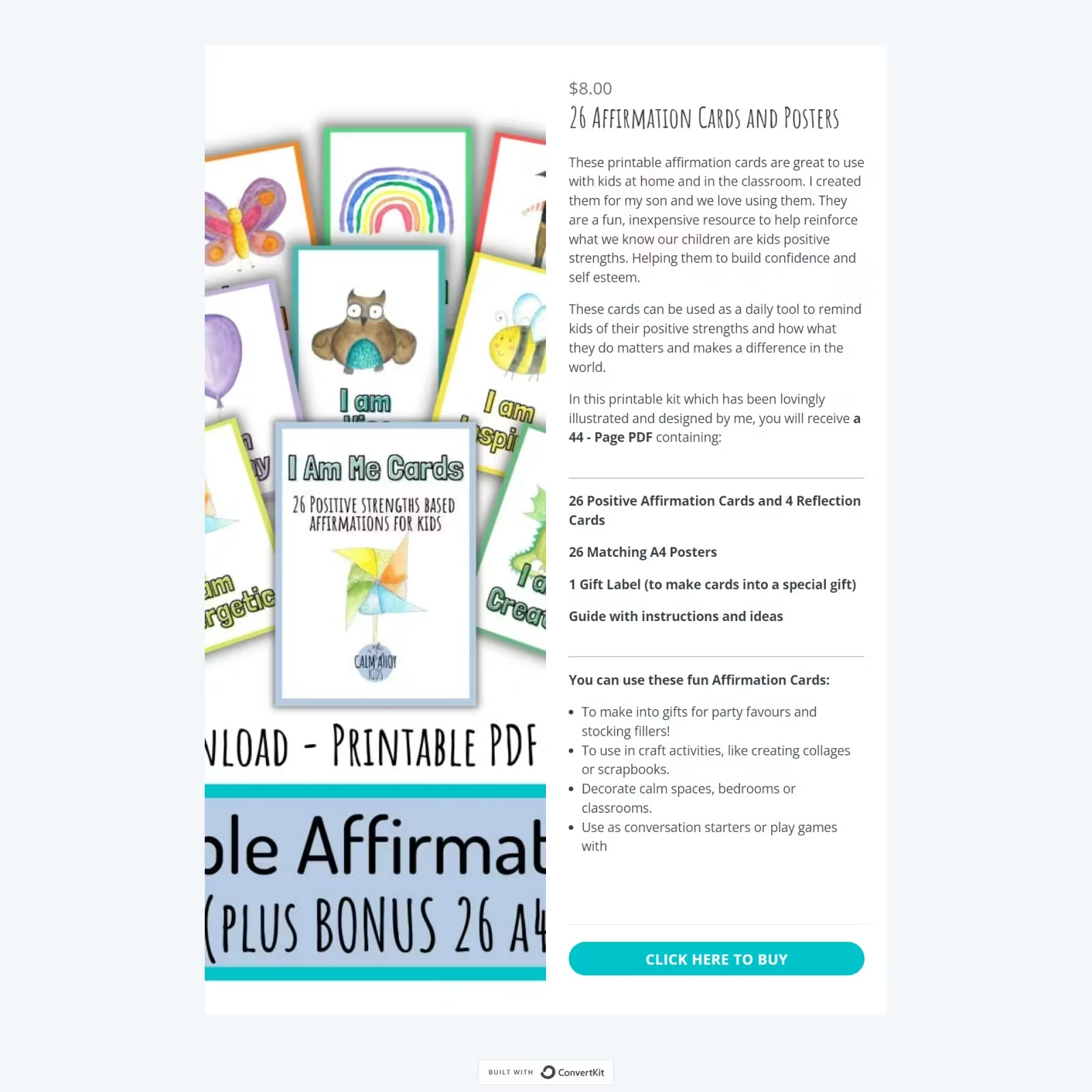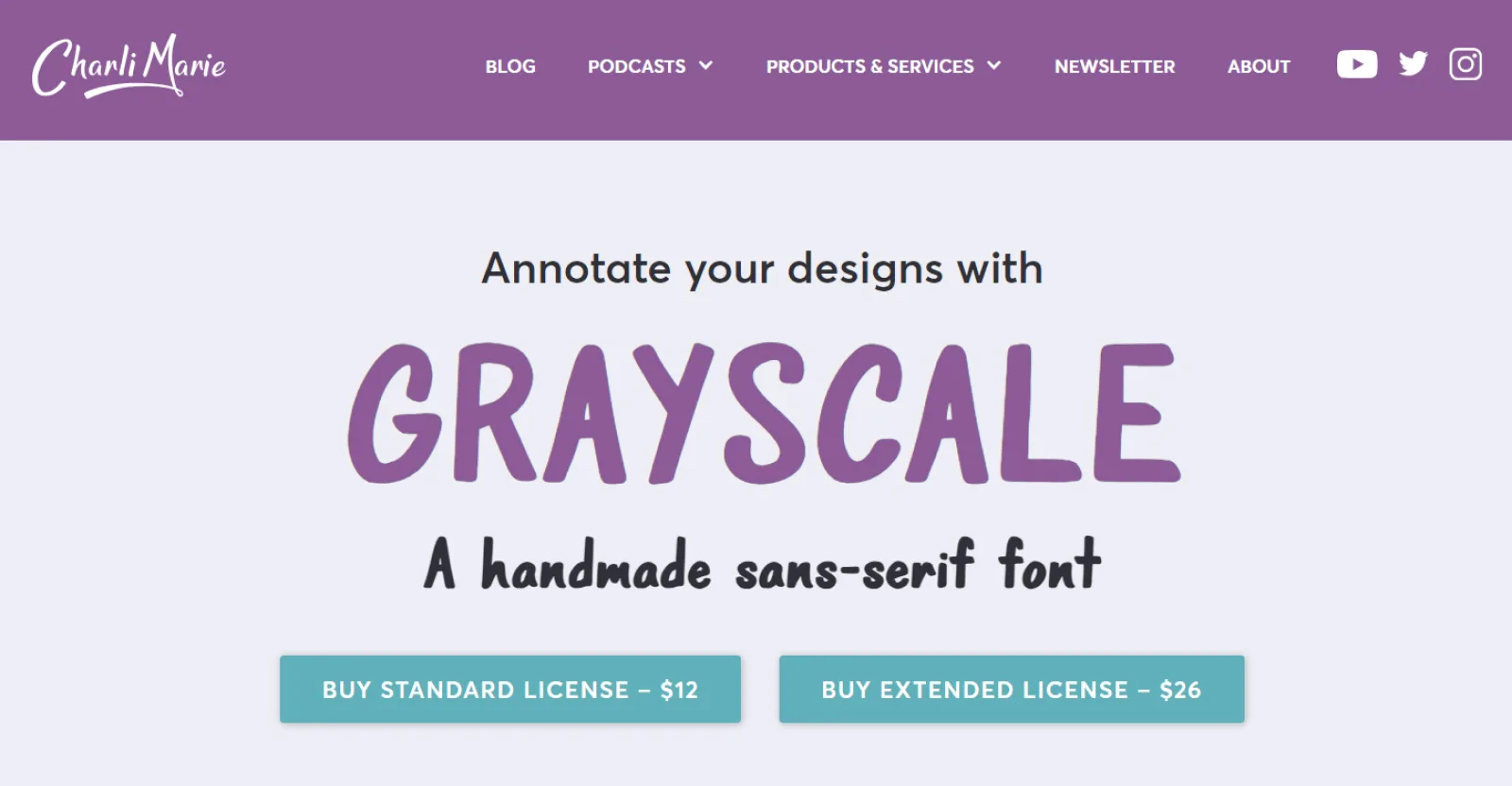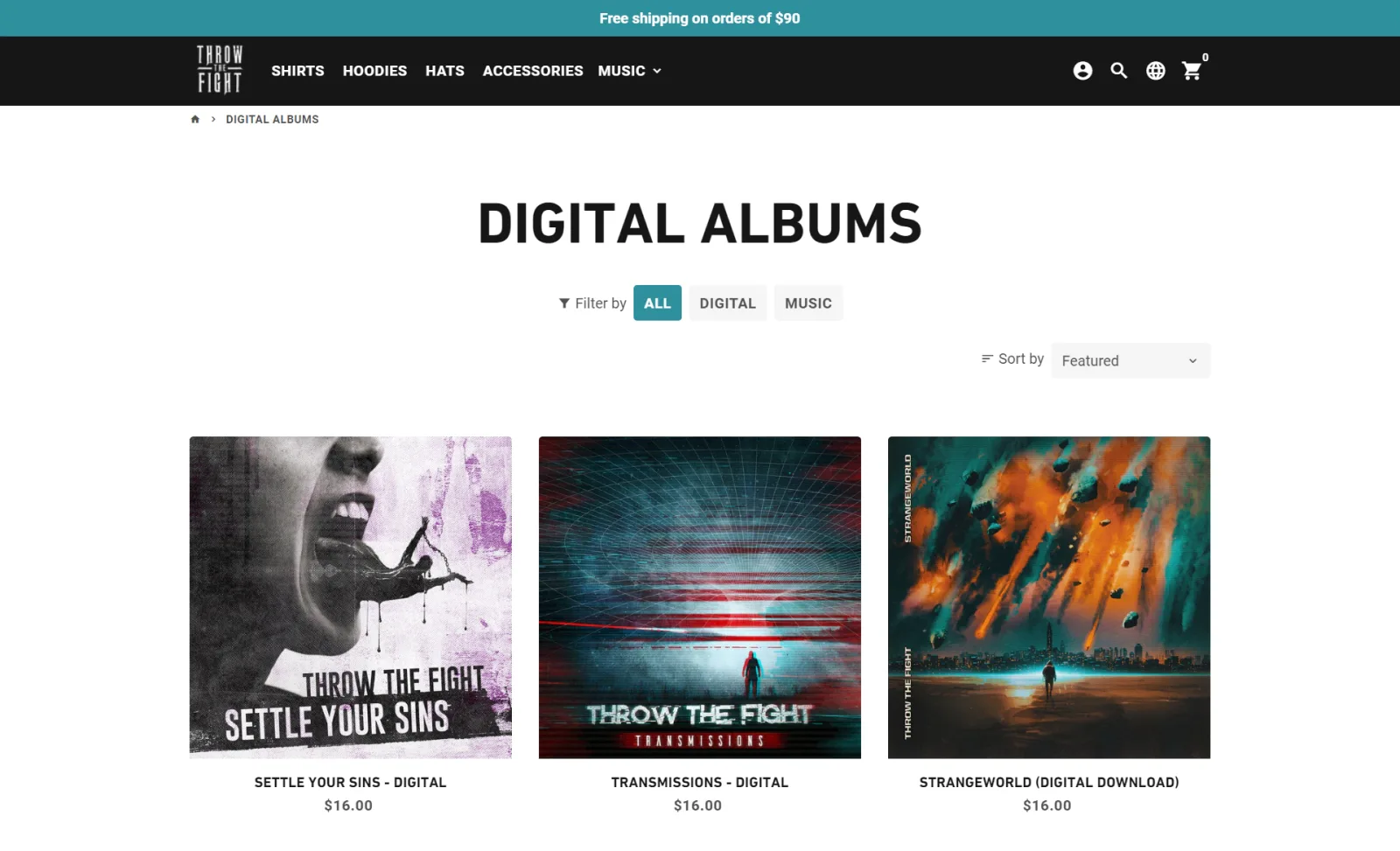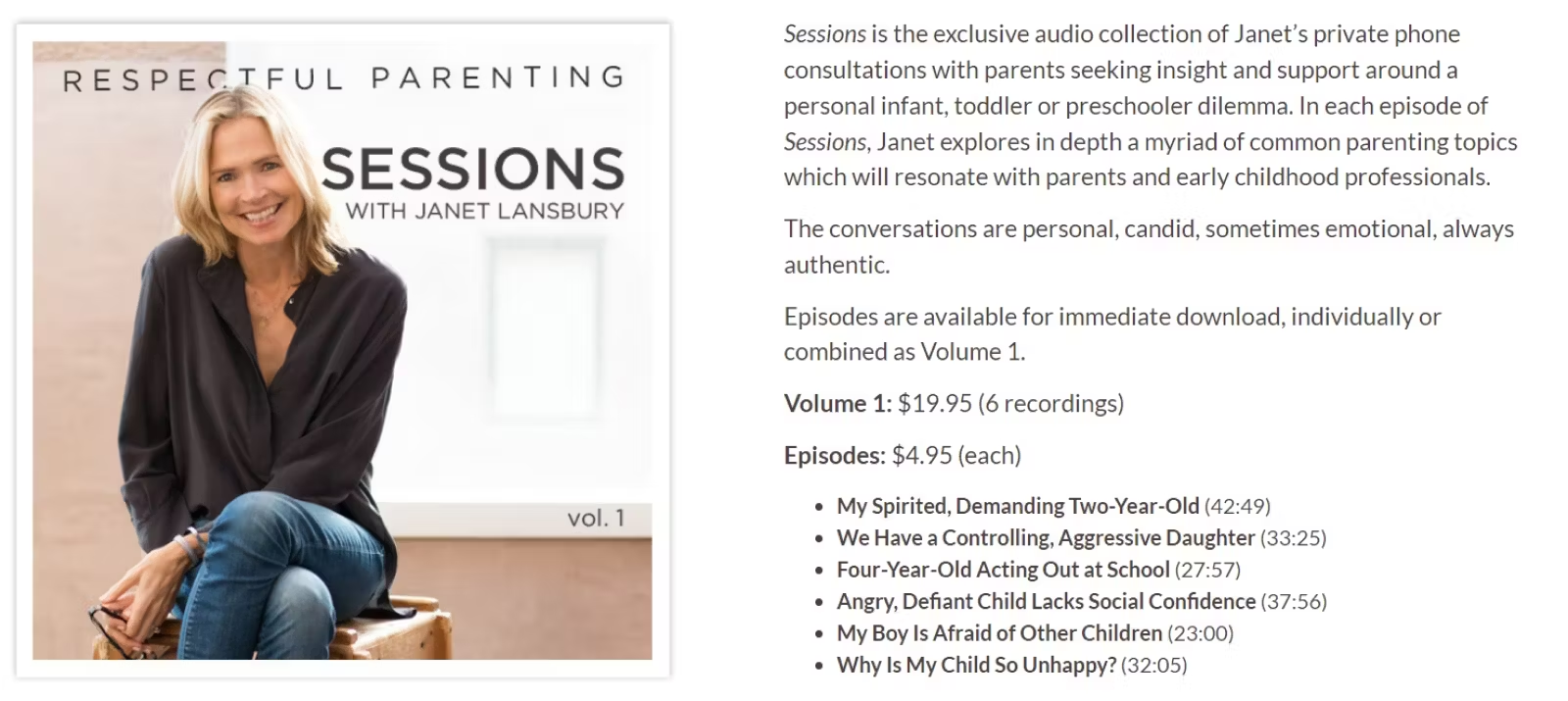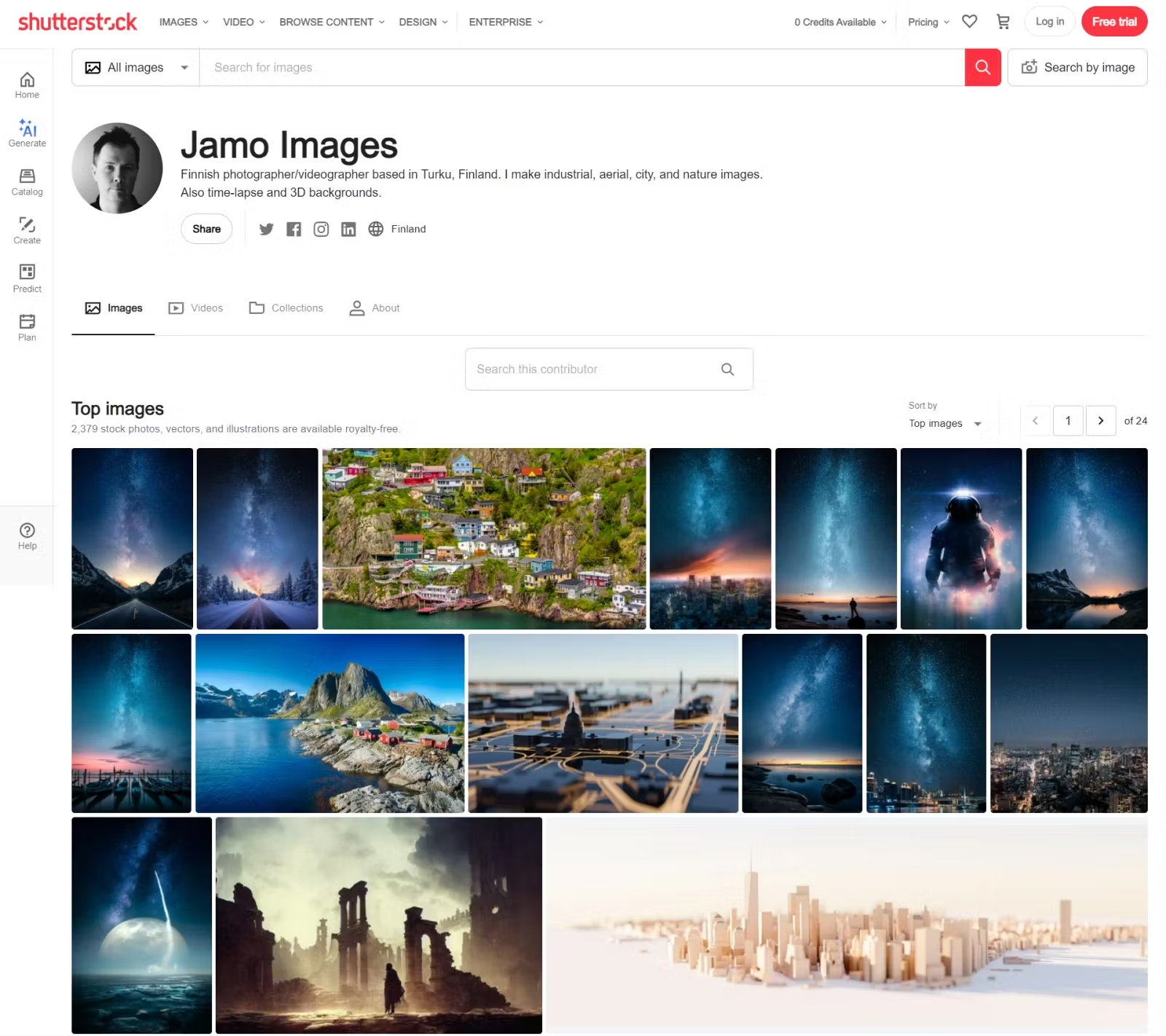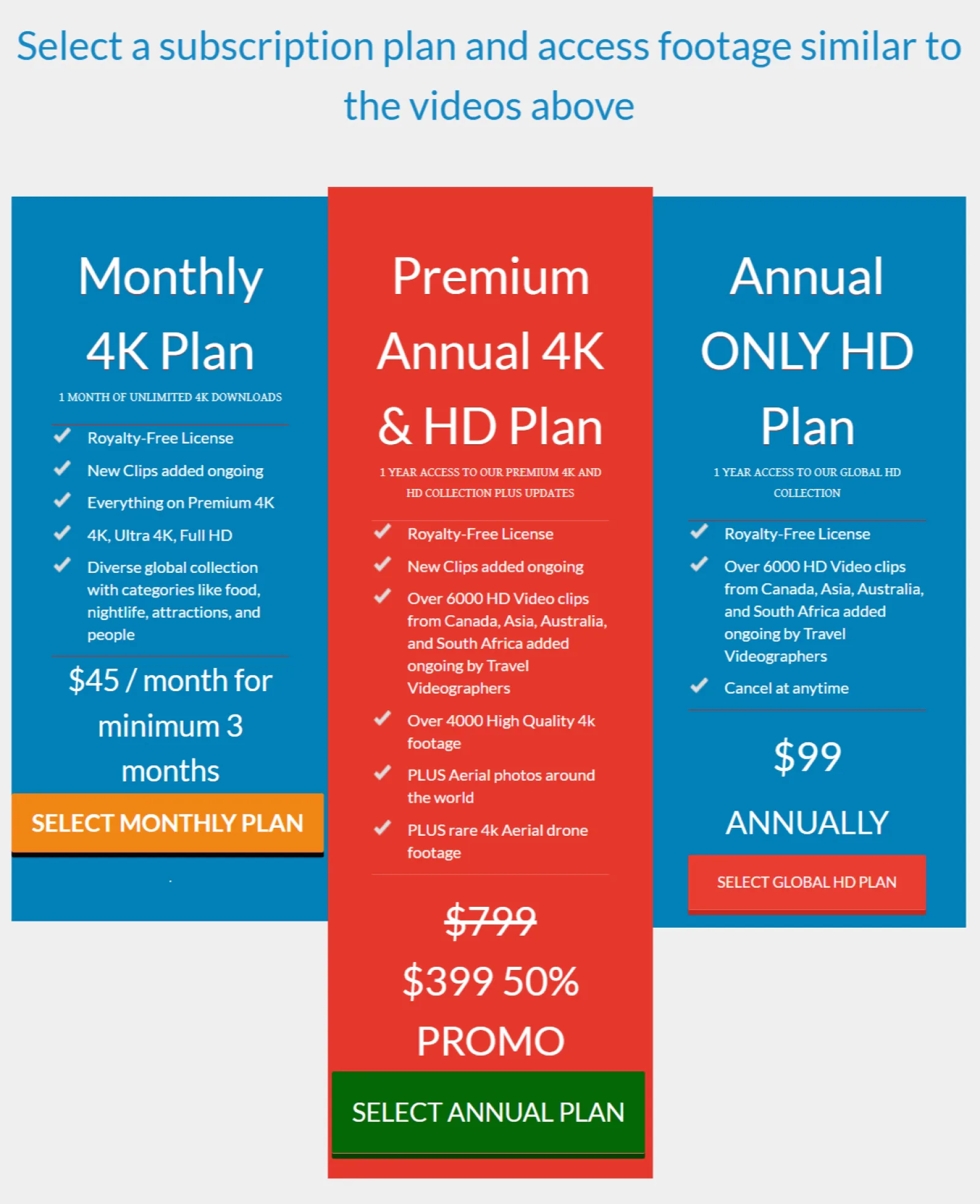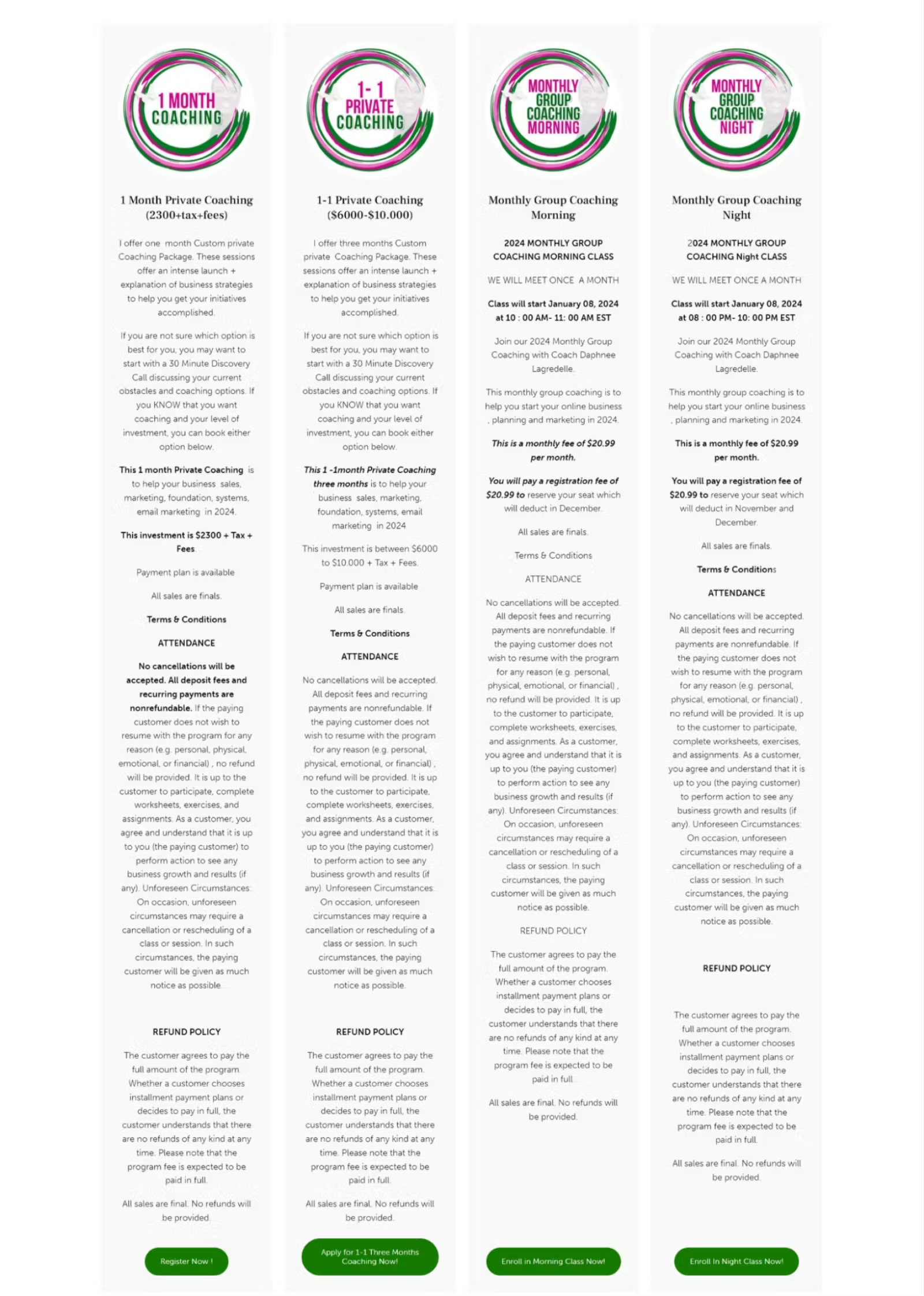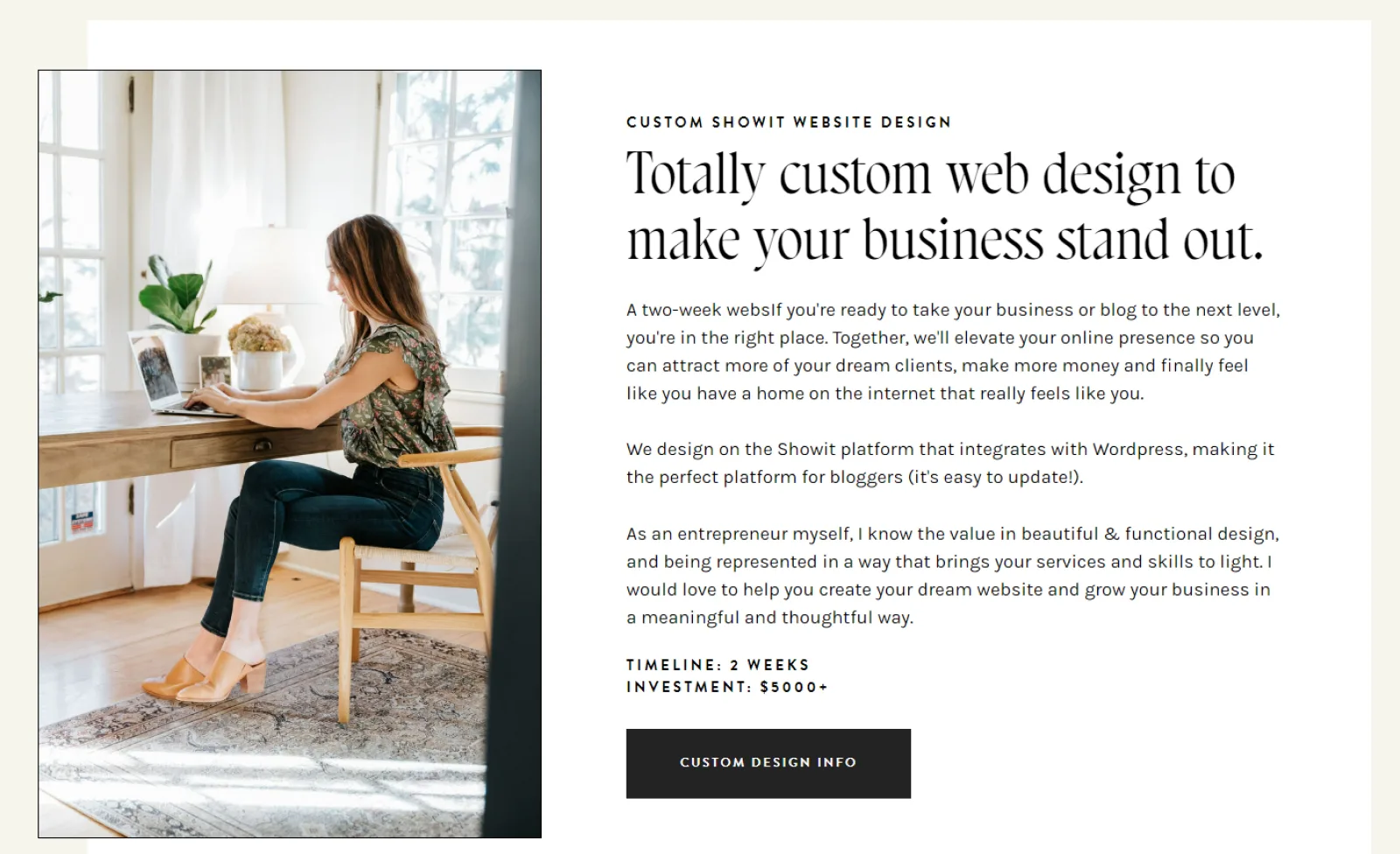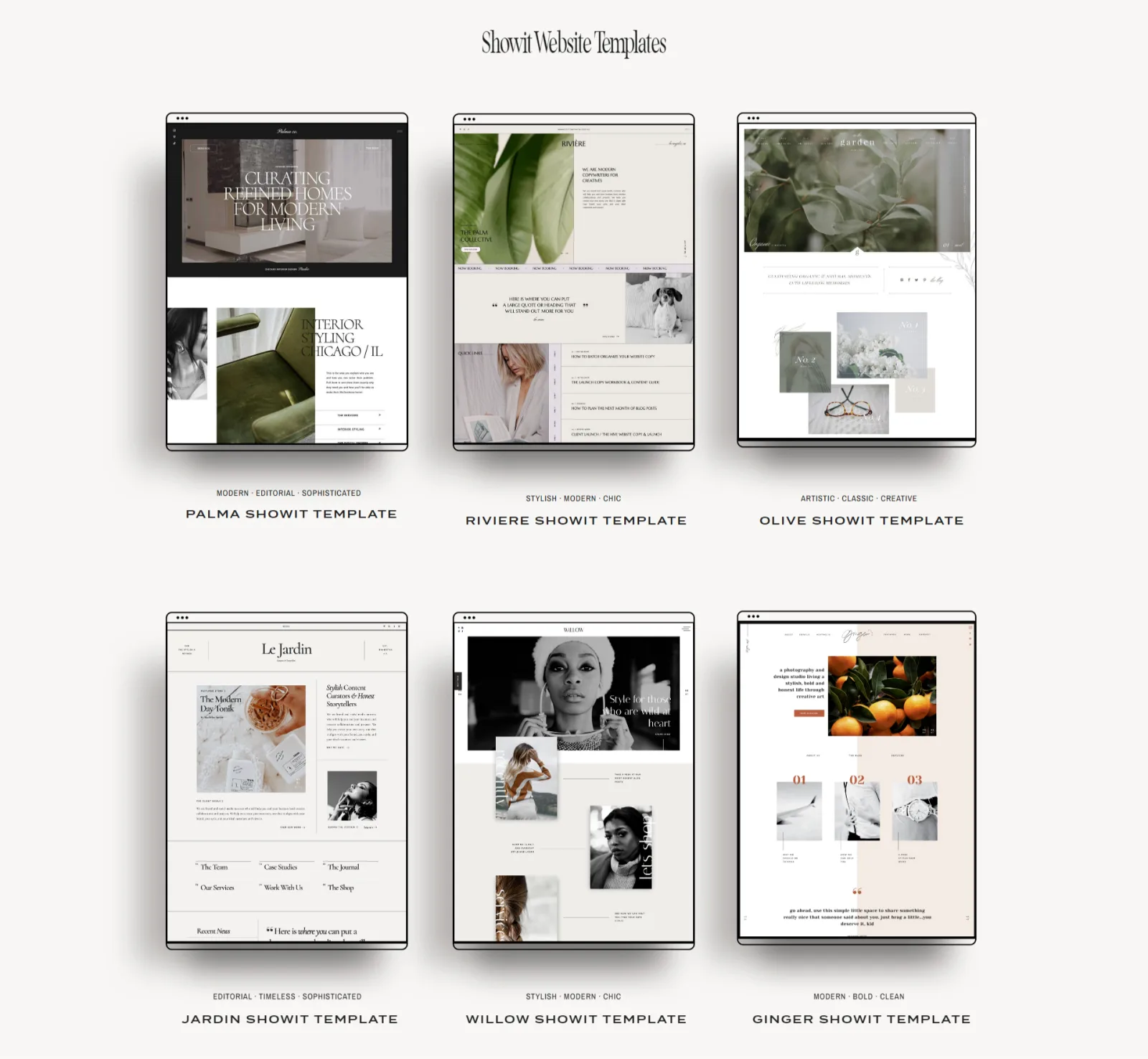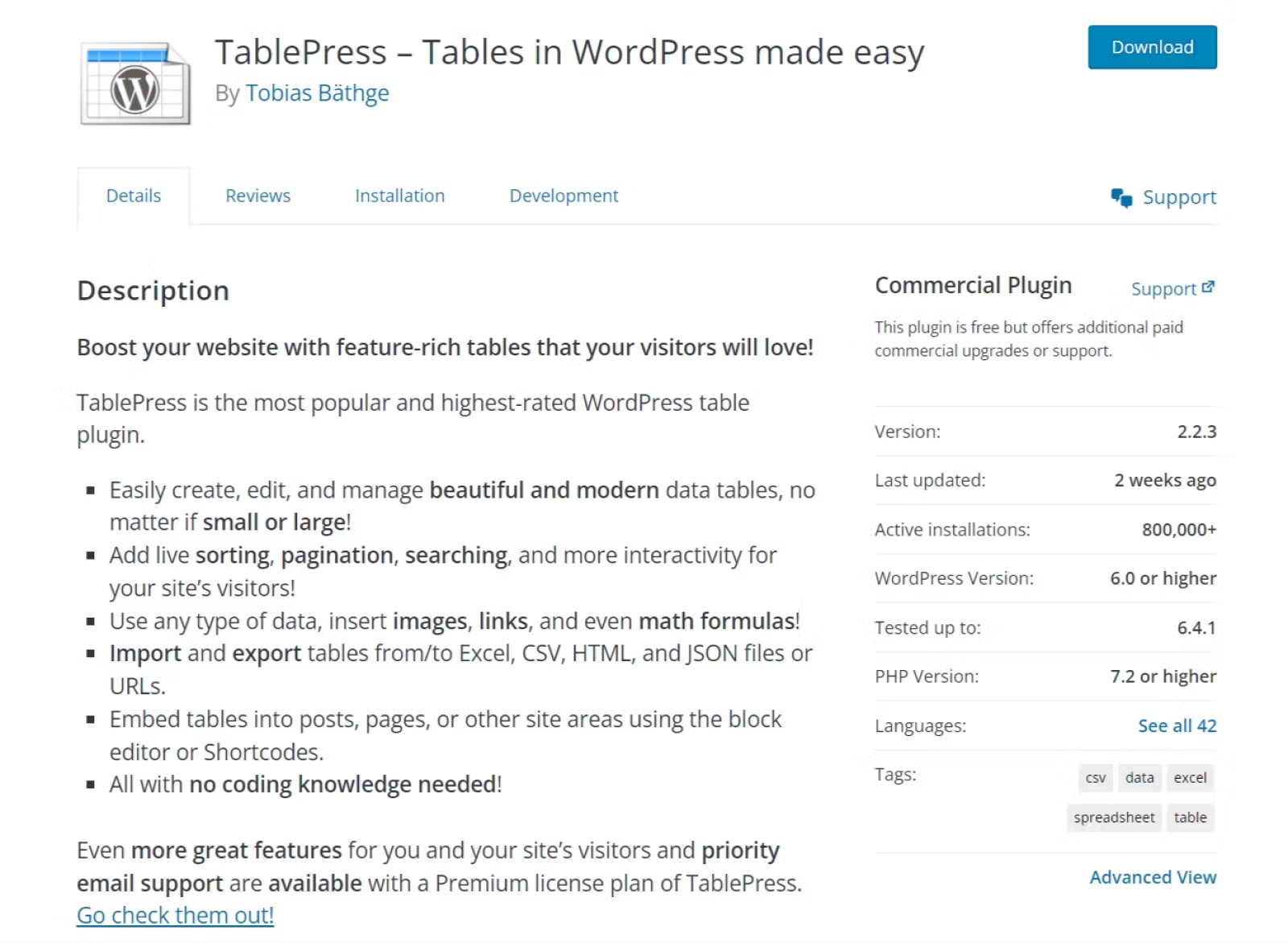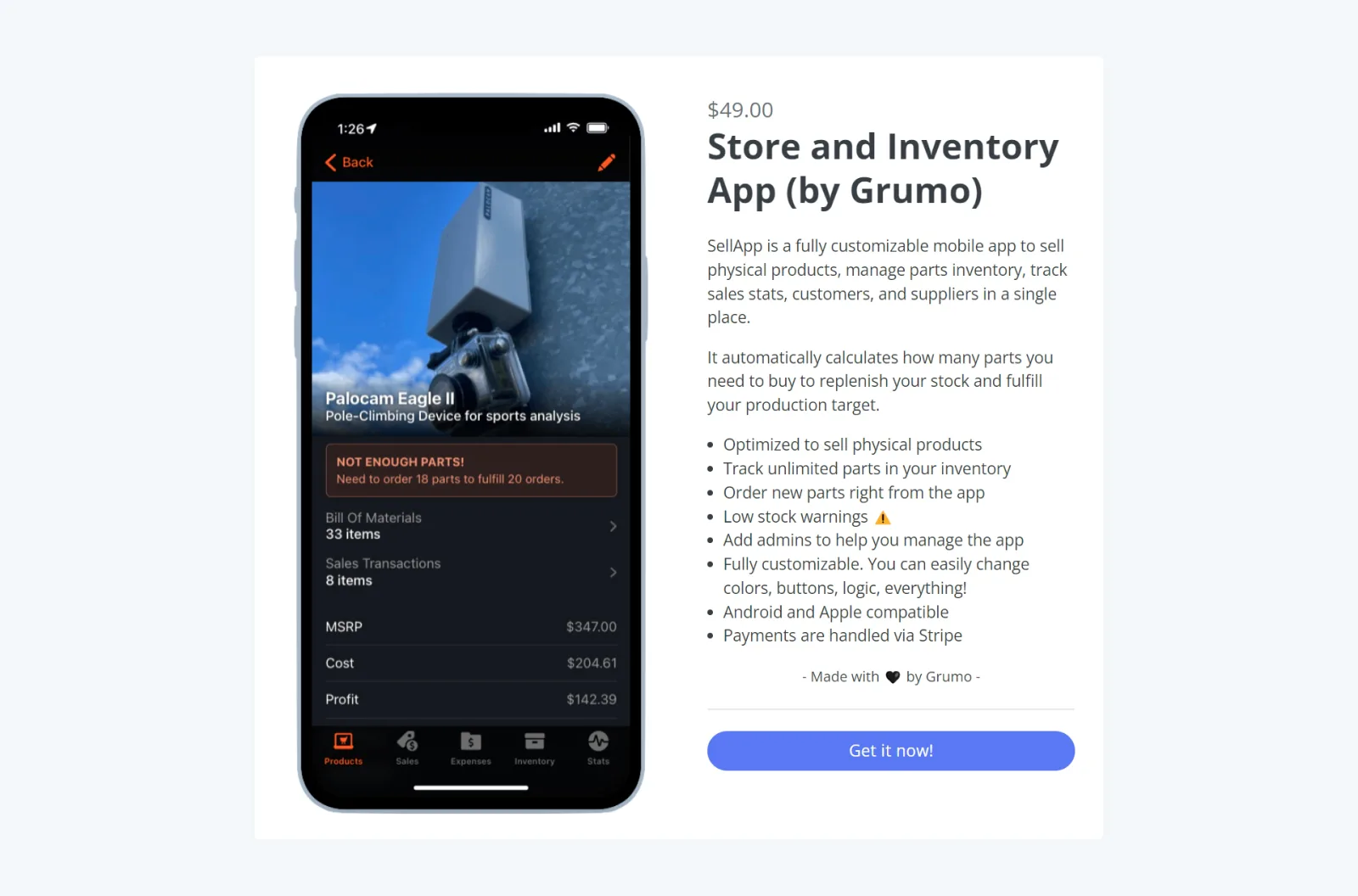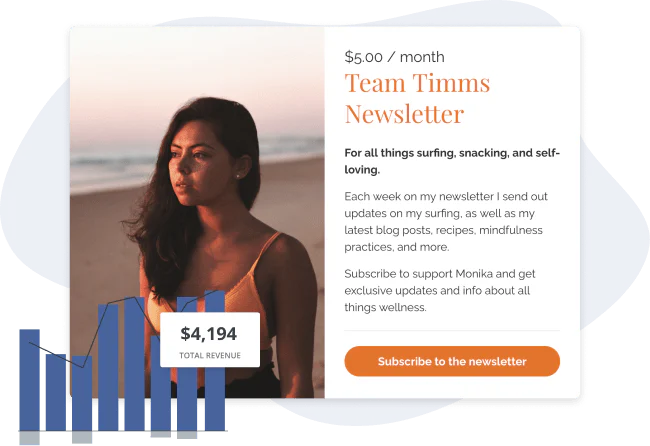In this Article
Wouldn’t it be nice if you worked less and earned more money?
Good news: You can with digital products.
Digital products are intangible goods and services that you sell and deliver online. Courses, ebooks, and printables are popular digital product ideas. But there are many more.
Today, we’re looking at 24 unique digital products for creators, with examples for nearly every niche.
Why creators should offer digital products
You should create a digital product because it’s a relatively hands-off approach to scaling your business.
Here are several other advantages of creating digital products:
- An additional income stream: Digital products let you diversify your income streams, so you don’t need to worry if sales dip in other areas of your business. This income stabilization can give you massive peace of mind.
- Diversify your products: Adding digital products alongside existing offers broadens your product range. This diversification attracts a wider range of customers and caters to your audience’s preferences and needs.
- Increase your income without increasing your workload: Most digital products require minimal maintenance after you create them. They’re perfect for busy creators who want to grow their businesses but are strapped for time.
- Create digital products on a small budget: You don’t need expensive tools or specialized know-how to get started. Plenty of free (and budget-friendly) tools are available to help you develop a digital product (like Canva).
- Automate the entire sales process: Email automations lets you streamline the entire sales process for your digital products. This way, you can focus on big-picture areas of your business rather than on tasks like manually promoting and selling products.
24 unique digital product ideas adaptable for every niche
- Educational resources
- Templates
- Design
- Recordings
- Photography and videography
- Service packages
- Technology
Educational resources
Educational resources are ideal for creators with a passion for teaching.
1. Ebooks
Ebooks are an easy digital product to make whether you’re just starting your business or are a seasoned expert.
And virtually any type of creator can write and sell ebooks.
Plus, if you keep a regular blog, you might have enough written content to repurpose into an ebook.
Ebook niche example by Reynelda Jones, Sheela Ivlev, and Catherine Jackson
Health professionals Reynelda, Sheela, and Catherine joined forces to create their ebook. It discusses how food affects how you think, feel, and behave.
If you aren’t sure you have enough insight to write an ebook yourself (but want to write one), take a page from Reynelda, Sheela, and Catherine and partner with another creator in your niche.
More ebook examples:
- Athlete: Tennis Tribe – Return Strategy for Doubles
- Coach: Joe Leech – Psychology for Designers
- Food blogger: Kristin Porter – Gluten Free on a Budget
- Artist: Tunde – Navigating the Challenges of Being a Neurodivergent Artist
- Flutist Coach: Chelsea Tanner – Flute Technique
2. Tutorials and guides
With tutorials and guides, you want to teach your followers how to complete a specific project. This digital product is ideal for creators in niches like crafting and DIY.
Tutorial example by Door 44 Studios
Door 44 Studios created a guide that teaches people how to create a woven bracelet. Their guide includes videos, shopping guides, and additional tutorials buyers can access.
More tutorial and guide examples for different niches:
- Quilter: Inspired Quilting by Lea Louise – Quilt Tutorial
- Crafter: Melissa’s Crafting Treehouse – Sweet Stockings Tutorial Bundle
- Artist: Art Projects for Kids – Four Ways to Draw Baby Yoda
3. Recipes and meal plans
Recipes and meal plans are ideal digital products for food bloggers and nutritionists. This digital product is especially easy to create if you have a collection of recipes ready to go.
Digital meal plan example by E.A. Steward
E.A. Steward sells four weeks’ worth of meal plans that adhere to a particular diet.
Along with the meal plans, readers receive grocery lists to help them make each recipe.
More niche meal plan examples:
- Athlete: Ultimate Meal Plans- Paleo Meal Plans
- Nutritionist: Illuminated Health – Holistically Healthy Membership
- Nurse: Beyond the Brambleberry – Mix & Match Meals
- Dietitian: Jenna Volpe – Sucrose Intolerance & CSID Diet Survival Guide
- Blogger: Jessi Fearon – Make My Life Easy! Meal Planning Workbook for Busy Moms
4. Email courses
Email courses are a flexible digital product idea. For example, you can decide how many days the course lasts and what’s included (like videos, audio, workbooks, or other supplemental material).
Because email courses offer so much flexibility, they work well for nearly any type of creator.
Email course example by The Bliss Bean
The Bliss Bean teaches a 21-day email course to help people improve their day-to-day lives.
Each day brings a new email with valuable resources so course-takers get the most from the experience.
More email course examples for different niches:
- Coach: Touch of Organized – Power of Speed
- Blogger: The Frugal Girl – Fight Your Food Waste
- Clinician: Neurodivergent Insights – Autism Burnout
- Coach: Erin Jean Warde – Discerning Sobriety Course
5. Workshops
Workshops are live events that last one (or a few) sessions. You can host your workshop in person if the majority of your audience lives in the same location. But if you cater to a global audience, host a virtual workshop.
Although workshops are live events, you can record your workshop and sell the recorded version to those who couldn’t join live.
Workshop niche example by Nick Wignall
Psychologist Nick Wignall hosted a 60-minute workshop to help people improve their communication skills.
This workshop was live, but Nick also sent out replays to those who couldn’t attend the live event.
More workshop examples:
- Blogger: This Routine Life – How to Use Time Blocking to Feel Organized & Productive
- Coach: Anna Nelson – Narrow Your Niche
- Consultant: Kabrina Budwell – Simple Systems
6. Online courses
Online courses tend to be the most profitable digital product idea. And you don’t need to look far to find courses priced at hundreds of dollars.
Plus, plenty of online course ideas make this a versatile digital product, no matter your niche.
Online course example by Ruth Power
Musician Ruth Power sells courses to help people learn to play the piano. She tells me that courses represent 30% of her income and that they have a conversion rate of 3% during her launches.
Ruth’s courses range in price from $47 to $196, helping her audience find a course that fits their budget.
More niche course examples:
- Scientist: Effortless Academic – Effortless Note-Taking
- Author: Lady Adey – Pitch Perfect
- Musician: Kat Bula – Fiddleprov
7. Paid newsletter
A paid newsletter is a recurring subscription-based digital product where subscribers pay a fee for exclusive content.
You should create a paid newsletter if you love to write and have a unique insight to share with your audience.
Paid newsletter example by Danny’s Essays
Danny Gregory is an artist with a paid newsletter. And get this: His paid newsletter has earned him $45,000 since 2021.
He uses his exclusive newsletter to discuss his artist process and provide tips to over 600 aspiring artists.
More paid newsletter examples for different niches:
- Kit founder: Nathan Barry – Secret Money Newsletter
- Entrepreneurs: Jack Appleby and Amanda Goetz – Break an Egg
8. Membership site
Membership sites are another subscription business idea for creators who want consistent income. And like courses, they have the potential to be highly profitable depending on what you charge for monthly access.
Memberships are best for creators who consistently make—or curate—content. That way, you’ll always have a stream of content to add to your membership site.
Niche membership example by Textile Indie
Textile Indie’s basket weaving club membership teaches people how to weave a new basket style each month.
Members can pay month-to-month or take advantage of a discount and pay for a yearly membership.
More membership examples:
- Author: Robert Glazer – The Elevate Club
- Dietician: Christy Harrison – Food Psych Weekly Sustaining Membership
Templates
Templates are a popular digital product that helps people achieve a task faster.
Let’s dive into some ideas to inspire your own.
9. PDF templates & Co.
PDF templates—like legal templates—are pre-designed documents that people can easily customize for their needs.
Legal template example by Amira
Lawyer turned coach Amira made $67,375 in one month selling legal templates, according to her 2020 income report.
She provides legal bundles for various personas like bloggers, interior designers, real estate agents, and more.
More legal template examples:
- Attorney: Christina Scalera – Contract Templates
More ideas for templates and downloadable PDFs
- Resume templates
- Cover letter templates
- Productivity checklists
- Invoice templates
- Travel itineraries
- Business proposal templates
10. Digital templates
Digital templates are files (aside from PDFs) that you package up as a template. Think Instagram Story templates or Photoshop file templates.
The customers for these types of templates tend to be other businesses. So, this digital product tends to work well for creators in the B2B space.
Instagram templates example by Anes Design
Anes Design sells a variety of Instagram Story templates that users can customize to match their own brand.
They also sell matching templates for Instagram posts:
Additional Instagram template examples:
- Blogger: Blog Pixie – Instagram Reel templates
- Designer: Voguish Studio – Instagram post templates
More digital template ideas
- Newsletter and email marketing templates (you can sell these in Kit’s Marketplace)
- Pinterest pin templates
- Media kit templates
- Brochure templates
- Wedding invitation templates
- Thank-you card templates
- Photoshop and Illustrator logo templates
- Budgeting templates/spreadsheets
Design
Artists (and creators with a passion for design) have plenty of options for selling unique digital products.
11. Artwork
Complement your one-of-a-kind (OOAK) art products with digital prints. This way, those who can’t afford a OOAK piece can still support you by purchasing your digital art.
Digital artwork example by Mimi Purnell
Artist Mimi Purnell sells a variety of art-related prints.
And in Q3 of 2022, she earned $18,868 AUD (around $12,500 USD), according to her income report.
And while Mimi takes care of the printing for her orders, you don’t have to. Some artists only sell printable files, where the customer prints the artwork themselves.
A few more digital art examples:
- Artist: The Little Gold Pixel – Various printable examples
- Artist: Tonya Seiler – Various printable examples
- Equine photographer: Steven Quon – Printable photographs
12. Patterns
Patterns can be a dependable digital product that brings you sales for years. Especially if your designs are timeless.
Sewing pattern example by Delphine with Just Patterns
Sewer Delphine creates sewing patterns for the clothes she personally enjoys wearing.
But it’s not just her who enjoys the patterns: she sells thousands of patterns each year.
More pattern examples:
- Sewer: Tamara’s Joy – Apron sewing pattern
- Quilter: Inspired Quilting by Lea Louise – Quilt pattern
- Sewer: Robyn’s Love of Sewing – Pretty Pin Tuck Dress pattern
13. Printables
You can turn many of your PDFs into printables for your audience to print themselves and use. Think printable planners, guides, activities, and workbooks.
Digital printable example by Calm Ahoy Kids
Calm Ahoy Kids created printable affirmation cards. When someone purchases their product, they receive the file they need (in the form of a PDF) to print each card.
More printable niche examples:
- Blogger: The Tasty Travelers – Printable cookbook bundle
- Yoga teacher: Yoga Teacher Journey – Yoga Class Planning Template printable
14. Fonts and icons
This digital product idea is perfect for designers with the skills (and software) to create something unique.
Fonts example by Charli Marie
Charli Marie sells her “Grayscale” font for other creators to use.
She’s earned £3,820 (around $4,800 USD) since releasing this font in 2020.
More fonts and icon examples:
- Artist: Natalie Art Shop – Line icons
- Typographist: Elvina Gafarova – Fonts
- Designers: Lemonade Pixel – Icons
More digital product ideas if you are into design
- Fonts
- Procreate brushes
- Illustrator brushes
- Vector graphics
- 3D graphics for augmented reality
- Premade color palettes
- Logos
- Icons
- Planners
- Backdrops for video chats
Recordings
Recordings are an ideal digital product to sell online for creators like musicians and podcasters.
15. Audio recordings
Audio recordings are the perfect digital product for creators like podcasters, motivational speakers, storytellers, or musicians. Plus, audio files can be relatively easy to make if you’re a confident speaker who requires minimal editing.
Audio niche example by The Infinity Call
The Infinity Call is a subscription-based meditation program that provides users with audio recordings for purchase.
Monthly memberships start at $44, or subscribers can pay $444 to access a yearly membership.
More audio recording examples:
- Musician: Christine Goodner – Time to Practice Prep Talk recording
- Storyteller: Listen to Sleep – Treasure Island audiobook
- Language teacher: Mila – Complete Guide of Russian-English Similar Words
16. Original music
People are always on the lookout for original music. Whether for listening purposes or to use as background music in videos, there are plenty of ways to package your original music to sell.
Digital music example by Throw the Fight
Kit creators, Throw the Fight, sell digital versions of their albums on their site.
Customers can choose to buy the entire album or individual songs.
More digital music examples:
- Poet: Queen Majeeda – The Conquering Lion EP
- Creators: EC Rice – Various jingles
- Videographer: Chicvoyage Productions – Beats for videos
17. Coaching recordings
Recording and selling your coaching sessions (with permission from clients) can be incredibly beneficial for those who can’t afford a private session but still want to learn from you.
Coaching recording example by Janet Lansbury
Janet Lansbury sells access to recorded phone consultations.
The audio recordings are a fraction of what a consultation with Janet would cost and appeal to a segment of her audience who aren’t ready to pay her private consult fee.
One more coaching recording example:
- Coaches: Sheri Boone and Jamee Tenzer – Real Coaching Sessions Unplugged
More digital product ideas if you are into audio
- Ringtones
- Meditation audio
- Samples
- Stock music
- Jingles
- Sound effects
- Instrumental recordings
- Beats
Photography and videography
Stock media is the perfect digital download idea for photographers and videographers.
18. Stock photos
Stock photos are a flexible digital product idea. You can charge a monthly fee or use a pay-per-download model.
Stock photo example by Jamo Images
Photographer Jamo sells stock photos on various platforms like Adobe Stock and Shutterstock.
And despite the rise of AI stock photos, Jamo’s earnings have remained steady. In 2022, he earned $10,309. And according to his monthly earnings chart, he’s on track to slightly surpass that amount for 2023.
More stock photo examples:
- Photographer: Alicia – Stock photo bundles
- Designer: Kayla Marie Butler – Stock photo bundles
19. Stock videos
96% of businesses view video as an important part of their marketing strategy, but 30% say they lack the time to create videos.
There’s a sizeable market of people who see the importance of video but don’t have time to create something from scratch. And that’s where you (and your stock videos) come in.
Stock video example by Chicvoyage Productions
Videographer Chicvoyage Productions offers unique travel stock videos of different cities around the world.
Customers can purchase a one-off video or a membership with access to a library of stock videos.
More stock video examples:
- Entrepreneur: Elle Drouin – Stock videos (and photos)
- Photographer: Alicia – Stock video bundles
More digital product ideas if you are into video and photography
- Lightroom mobile presets
- After Effects templates
- Video LUTs
- Mockup images
- Mockup videos
- Scene creator
- Calendar with your photography
Service packages
If you’re a service provider (like a coach, consultant, or freelancer), you can easily create a range of service packages to sell as digital products.
The bonus to service packages is they can sell for several thousands of dollars. The downside is they require more hands-on work than something like an ebook.
20. Consulting or coaching packages
Consulting and coaching packages cater to individuals or businesses who want advice, strategic insights, or skill development within a particular niche.
You can develop your coaching programs however you like. For example, if you want to work with clients long-term, create programs that span several months. Or, if you prefer quicker sessions, offer intensive one-day training.
Coaching package example by Daphne Lagredelle
Online business coach Daphne earns over $100,000 selling coaching packages and one-on-one coaching services.
She offers different packages so clients can find the one that suits their needs.
More coaching and consultant examples for different niches:
- Brand strategist: Maker and Moxie – 1:1 Brand Coaching Session
- Career coach: The Berlin Life – Cover Letting Coaching
- Productivity expert: Mark Struczewski – Anti-Overwhelm Power Session
21. Web design packages
Most businesses want their own website. But many business owners don’t know where to start. If you know how to code and build sites, this digital product is perfect.
Web design package example by Blair Staky
Web design Blair Staky creates custom sites for her clients.
She states that custom designs and freelance services make up 48% of her income (things like affiliate sales, other digital products, and ads make up the rest of it).
A few more web design examples:
- Web designer: Kaleigh Noele – Squarespace web design
- Web designer: Blume and Spark – Squarespace and WordPress web design
Technology
If you consider yourself good with code, there’s an audience of not-so-techy people eager to buy your products.
22. Website themes
Website themes let people build their own sites without starting from scratch.
This type of digital product is less hands-on than designing a custom website for someone. But it’s not entirely passive since you still need to offer support and assistance to people who buy your themes.
Website theme example by Angela Mondloch
Designer Angela Mondloch sells a range of templates for the website platform ShowIt.
Each template comes with different pages (like 404 pages, blog pages, and services pages) and video tutorials to help people use the templates.
More website theme examples:
- Web designer: Bluchic – WordPress themes
- Web designer: Ella Web Designer – Squarespace themes
23. Website plugins
If you like solving problems, plugins might be your digital product niche of choice.
Like website themes, you’ll need to implement some type of support in case people encounter glitches or issues.
Website plugin example by Tobias Bäthge
Tobias Bäthge is a web developer who created a freemium plugin to help website owners create tables in WordPress.
As of today, his plugin has over 13 million downloads.
More website niche examples:
- Web developer: Vova Anokhin – WP Shortcodes plugin
- Full stack web developer: Till Krüss – Email Address Encoder plugin
- WordPress plugin developer: Maciej Bis – Permalink Manager Lite plugin
- Web developer: Carlos Moreira – Interactive Geo Maps plugin
24. Apps and software
Building software can lead to big growth over time. You can start small with an iPhone or Android app or go big with a SaaS platform.
App example by Grumo
Grumo, created by Miguel Hernandez, created an app to help people manage physical products. On his blog, Miguel notes that he uses a no-code app called Glide to build his apps.
That’s great news for non-developers who want to create an app but don’t have coding experience. Other no-code app builders to consider are Stacker and Noloco.
One more apps and software example:
- Educational company: CM Videos – MontCarlGen2D v1.0 software
More digital product ideas if you are interested in tech
- Landing pages
- Wireframes
- Photoshop plugins
- Illustrator plugins
- Animations
- Browser plugins
- CGI models
- Copy and paste code snippets
- Analytic templates
How to sell your niche digital products online
Essential groundwork before you create your digital product
Here’s how to narrow down—and choose—the best digital product to invest your time creating.
Select a digital product type that aligns with your current stage as a creator
There are three different stages of being a creator. And choosing a product depends on which stage you’re in.
Let’s go over each stage:
1. New creators who just started their businesses: If you just started your business and don’t have an intimate understanding of your audience (or previous content), you may want to consider products like:
- Artwork
- Patterns
- Printables
- PDF templates
- Digital templates
2. Intermediate and advanced creators looking to scale: If you’ve had your creative business for several years, you likely know what your audience likes and what they don’t like. You may also have a large library of content that you can easily repackage into a digital product. Consider products like:
- Ebooks
- Tutorials and guides
- Recipes and meal plans
- Email courses
- Fonts and icons
- Audio recordings
- Original music
- Stock photos
- Stock videos
- Website themes
- Website plugins
3. Pro creators who have been in business for several years: At this stage, you have built a loyal audience, and you know them like the back of your hand. You might want to consider high-ticket offers like:
- Membership site
- Consulting or coaching packages
- Web design packages
- Courses
- Apps and software
- Coaching recordings
Keep in mind that the above list is just a recommendation. If you feel like tackling a product that isn’t on your list, go for it.
Brainstorm ideas for your niche and digital product
The digital product you create depends on your audience and their goals.
Because you want to create a product that helps them get one step closer to their hopes, dreams, and desires.
Take these products, for example:
- A 12-week postpartum mobility program for new moms
- A comprehensive guide to trim your dog’s nails for pet owners
- A webinar to help podcasters improve their podcasts
- A makeup guide to help people upgrade their makeup skills
Each product above helps someone achieve a specific goal. In this step, you need to develop several viable product ideas, just like the examples above.
To start generating ideas, head to places on the web where your ideal audience hangs out. Like Facebook groups or Reddit forums.
Spend time going through posts to see which questions people ask repeatedly—these are likely the areas they want the most help with (and will pay for a product that helps them).
As you research your audience, jot down three to five potential concept ideas.
Research and confirm your digital product concept
Now, you need to confirm your product idea.
The best way to do that is to:
- Create a subscriber survey: Subscriber surveys let you hear directly from the people who will (hopefully) buy your product. So you want to make sure you get their opinions.
- Social media polls: Launching polls on social media (like through Instagram Stories) is an easy way to collect a large amount of data. Make sure to keep these polls simple. Three to five questions is best, as people might exit your survey if it’s too long.
- Interviews or focus groups: Interviews and focus groups can give you highly detailed insight. They also let you dive deep into specific areas and uncover insight you may not have known about your audience. You can set these interviews up by checking who is most engaged on your email list (for example, those who open the most emails). These people are likely fans of your brand and may be willing to sit down for 30 minutes to chat.
Turn your digital product idea into reality and $$$
With your idea in tow, it’s time to build out your digital product and start selling.
Decide on a price for your digital product
Nailing down the right price for your product doesn’t need to be complicated. Use these three pricing methods to come up with the optimal price point:
- Cost-based pricing: Cost-based pricing prices your product on how much it costs to produce it. For example, if you spent 100 hours building a website and your rate is $50/hour, you’d charge $5,000 for that website. Cost-based tends to work best for service-based digital products.
- Value-based pricing: Value-based pricing is when you price your product based on how much it’s worth in the eyes of your customers. For example, an ebook that teaches someone a skill they’ve struggled with for years might be worth a lot in their eyes. If that’s the case, you can price your product higher than the average ebook.
- Competitor-based pricing: Competitor-based pricing is when you price your products based on the market. For example, if your competitors sell art printables for $10 to $25, you’d likely price yours within that range as well.
If you aren’t sure which pricing model to use, start with competitor-based pricing, as it’s the easiest. Then, adjust your pricing every month or so until you find the sweet spot—the price that yields the most sales from your audience.
And remember: Lower pricing doesn’t necessarily mean more sales.
Customers may perceive a lower price with lower quality, which could lower your sales. It’s best to experiment so you know how people will react to different price points for each product you sell.
Set up and sell your digital product with Kit Commerce
Time to get your product ready to sell. For that, you need an ecommerce platform.
There are plenty of ecommerce platforms that you may have already heard of, like Gumroad or Etsy. Kit Commerce is another great ecommerce platform that lets you build an email list and sell different types of digital products all under one roof.
Plus, Kit Commerce integrates with advanced ecommerce platforms like Shopify and WooCommerce. Making it easy to sell your products across multiple platforms.
Here’s how to set up your first product in Kit Commerce:
- Once logged into Kit, click Earn > Products > + New product.
- Fill out the product details like your product’s name, its type, and its price.
- Design your product’s landing page with our visual builder. When you’re done, click Publish.
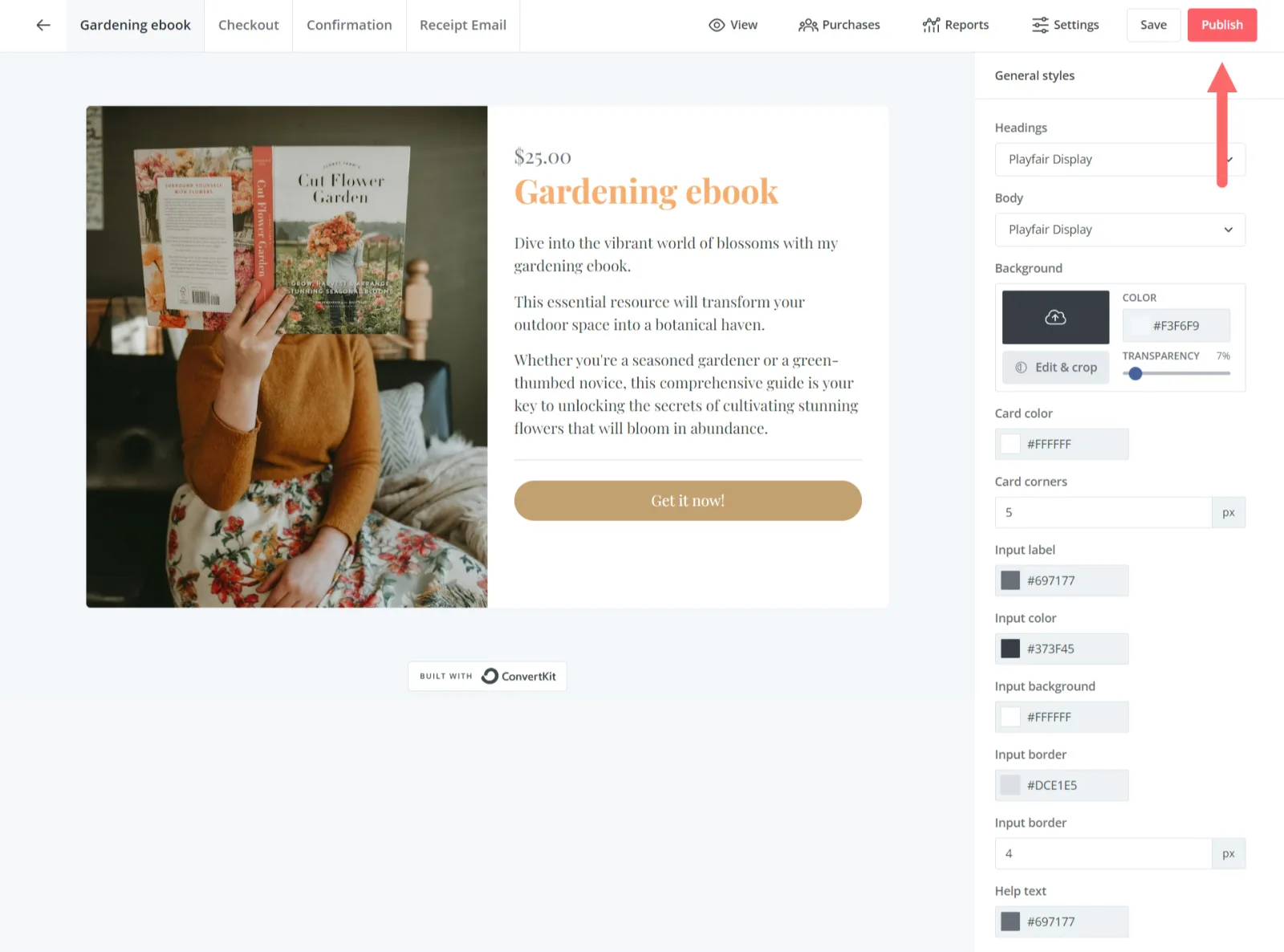
5 pricing strategies to sell more digital products
These five pricing strategies can help attract even more customers:
- Create pricing tiers with varying services and commitments: Tiered pricing lets people buy your product at a price suitable for their budget. And according to Harvard, a three-tiered pricing model can shift consumers from a “buy/don’t buy” mentality to a “consideration” mentality. Which can help you increase sales and help consumers find a product that fits their budget. Everybody wins.
- Provide payment installments: 48% of consumers say they use payment installments for products that otherwise wouldn’t fit into their budgets. By offering installments, you can attract a wider customer base that may not have purchased from you without the installments.
- Offer discounts: Using discounts can attract new buyers and entice past customers to purchase more of your products. But use discounts sparingly (a few times per year is ideal). Otherwise, you may unwillingly prime consumers to avoid paying full price for your products.
- Use upselling: Upselling is when you encourage customers to buy additional products, upgrades, or buy a higher-priced item. And it can have a major impact on your bottom line. In 2023, 76% of sales professionals reported that over 10% of their company revenue came from strictly from upselling. A simple way to upsell with digital products is to offer product bundles.
- Use down-selling: Down-selling is when you offer cheaper alternatives. For example, someone who doesn’t want to buy a $197 course might consider a $25 ebook. By offering different products at different price points, you can attract more consumers.
Start marketing your digital products online
The last element of selling a digital product is to market it. Here are a few ideas:
- Set up a product landing page: A product landing page is your personal sales machine. It drives sales by explaining how your product will benefit your audience (and why they should consider buying). And you can even drive free traffic by optimizing your landing page for search.
- Embed products directly on your website: Add products to pages on your site, like a shop page, relevant blog posts, and your sidebar. This way, visitors can learn about your products everytime they land on your website. Even if they aren’t ready to buy, you’ll be top of mind when they are.
- Add products to your newsletters and email campaigns: Your newsletter offers plenty of opportunities to mention—and promote—your products. Sales email sequences are great for hard sells. And you can use your weekly newsletters to mention your product in a non-salesey way.
- Use social media posts and ads: Organic and paid social let you reach a wide audience. Even better, you can use your email list to create a custom audience to advertise to on social media. Custom audiences ensures your ad dollars are spent on an audience interested in your brand.
- Market products with a product launch email campaign: Create a product launch email sequence to welcome your new product to the world. And at the end of your sequence, include upsell and down-sell emails to capture those who want to spend more or less.
Diversify your business with digital products
Digital products can be your ticket to growing your business and building a stream of reliable income.
And with Kit Commerce, you don’t need to worry about setting up payment processors or building landing pages from scratch—we’ve got you covered.
Start using Kit to sell your digital products today.



